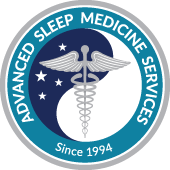The patient clearly has sleep apnea, but it’s not severe enough for the insurance company to cover therapy. Why?
Unfortunately, there are varying opinions about how sleep apnea is diagnosed and when CPAP is the appropriate therapy.
Primarily, the difference is between how Medicare (CMS) and the American Academy of Sleep Medicine (AASM) define a diagnosis of sleep apnea. And many commercial insurances are starting to follow Medicare’s guidelines for CPAP coverage.
In this post we’ll explain what insurance companies, including Medicare, are looking for in a sleep study to determine coverage for CPAP. We’ll offer suggestions of what to do if insurance won’t cover CPAP.
What’s the difference between AHI and RDI?
AHI stands for Apnea Hypopnea Index. It’s the average number of combined apneas and hypopneas per hour. It is most often used to determine the severity of a person’s sleep apnea. An apnea is when your breathing stops for at least ten seconds while sleeping (learn more about the basics of sleep apnea here). A hypopnea is a significant reduction in airflow while sleeping (not a complete stop) that causes a drop in blood oxygen saturation and then an arousal.
RDI stands for Respiratory Disturbance Index. This is your combined number of apneas, hypopneas, and RERAs per hour of sleep. RERA stands for respiratory effort related arousal is an event that causes an arousal or a decrease in oxygen saturation, without qualifying as an apnea or hypopnea.
AHI has been the traditional measure used to determine the severity of sleep apnea; however, some institutions and insurances are looking at RERAs because any respiratory event that lasts at least 10 seconds and causes an arousal can cause damage and should be treated. The chart below lists AHI criteria.
Is your sleep apnea normal, mild, moderate or severe?
None/Normal: Almost everyone experiences the occaisional apnea event while sleeping, so having less than 5 of these events per hour is considered normal and no treatment is recommended.
Mild Sleep Apnea: CPAP is not always recommended as the first option for treating mild sleep apnea. Other interventions, such as weight loss, use of positional tricks (if sleep apnea occurs primarily while sleeping supine, or on your back), improvements in sleep hygiene and oral appliances may be recommended (learn more about CPAP alternatives here). This is the fuzzy area for CPAP coverage.
Moderate and Severe Sleep Apnea: CPAP therapy is usually recommended. Most insurance companies will authorize payment for CPAP if your AHI is moderate to severe (learn about how CPAP therapy works to treat sleep apnea here).
Medicare vs. AASM guidelines
Medicare defines RDI as the average number of apneas and hypopneas (so it’s really the same as AHI), they do not include RERAs. In order for Medicare to coverage CPAP for sleep apnea, the patient must meet one of the following criteria for obstructive sleep apnea to be diagnosed:
- AHI or RDI must at least 15 events per hour (read more about the other Medicare requirements for CPAP coverage here).
- AHI or RDI greater than or equal to 5 and less than or equal to 14 events per hour with documented symptoms of excessive daytime sleepiness (EDS); impaired cognition; mood disorders; insomnia; or documented hypertension, ischemic heart disease, or history of stroke.
Some insurances refer to the American Academy of Sleep Medicine (AASM) standards for RDI which includes apneas, hypopneas or RERAs.
When we, at Advanced Sleep Medicine Services, score sleep studies, we include RERAs in our calculation for RDI.
The AASM requires one of the following criteria be met for a diagnosis of sleep apnea:
- The patient reports daytime sleepiness, unrefreshing sleep, fatigue, insomnia, and/or unintentional sleep episodes during wakefulness. The patient awakens with breath holding, gasping, or choking. The patient’s bed partner reports loud snoring, breathing interruptions, or both during the patient’s sleep.
- Polysomnography (PSG) shows more than 5 scoreable respiratory events (eg, apneas, hypopneas, RERAs) per hour of sleep and/or evidence of respiratory effort during all or a portion of each respiratory event.
-
PSG shows more than 15 scorable respiratory events (eg, apneas, hypopneas, RERAs) per hour of sleep and/or evidence of respiratory effort during all or a portion of each respiratory event.
-
Another current sleep disorder, medical or neurologic disorder, medication use, or substance use does not better account for the patient’s condition.
If a patient has an RDI greater than 15 (including RERAs) but their AHI (called RDI by Medicare) is under 15, Medicare and other insurances will not approve CPAP therapy for a diagnosis of sleep apnea.
Our experience in California is that some Blue Cross policies (primarily those who use AIM to manage utilization), some Blue Cross Blue Shield policies and Aetna will consider RDI when determining coverage. All other commercial plans are following Medicare guidelines.’
There is no universal standard about whether AHI or RDI should be used for diagnosis and Medicare varies by region as to whether AHI and RDI can be used. One study found that 30% of symptomatic patients would have been left untreated if the AHI were used rather the RDI.
What should I do if my insurance won’t cover CPAP?
If you and your doctor determine that CPAP is the best course of treatment, but your insurance will not cover CPAP because you do not meet the Medicare requirements, you have a couple of options:
- Contact your insurance company. If you do not meet Medicare requirements but meet AASM guidelines, tell them so! Unfortunately, Medicare won’t budge unless you have documented symptoms of excessive daytime sleepiness or the other medical conditions listed above.
- Ask your doctor to contact your insurance company. Your doctor’s office can review your chart to see if you have other documented symptoms that may help get approval. A call from your physician can go a long way, but it takes a lot of time and effort on their part.
- Pay cash for a CPAP.
- Look online for an organization that provides free or low-cost CPAPs (we have a list here).
- Consider having another sleep study. Your sleep apnea may not have been recorded at its worst on the night of your sleep study. For example, many patients have more severe sleep apnea while in REM sleep or when sleeping on their backs. Your second study may not be covered by your insurance (read more about how much a sleep study costs here).
If you have sleep apnea and would like to use CPAP therapy but are unsure of whether your insurance will pay, contact us to verify your benefits and discuss alternatives.
Sources:
http://emedicine.medscape.com/article/295807-differential
http://healthysleep.med.harvard.edu/sleep-apnea/diagnosing-osa/understanding-results
https://www.cms.gov/medicare-coverage-database/details/nca-decision-memo.aspx?NCAId=19&fromdb=true
http://www.aasmnet.org/scoringmanual/
http://emedicine.medscape.com/article/295807-differential
Other posts you may find interesting:



